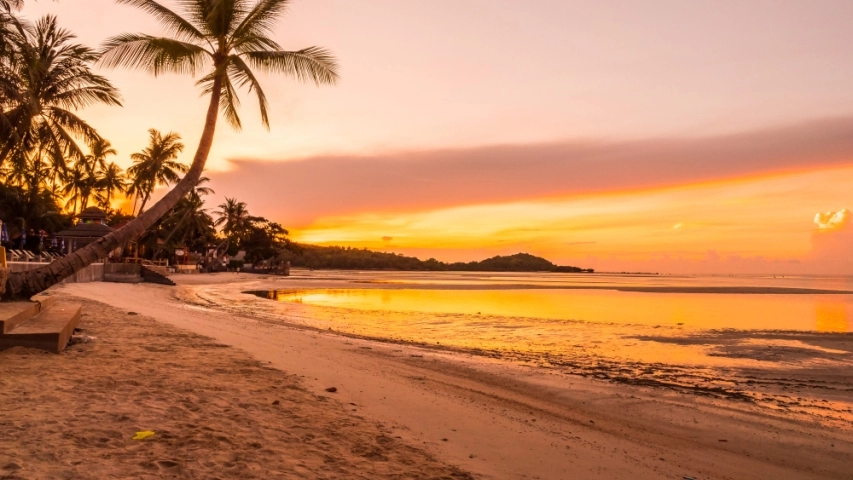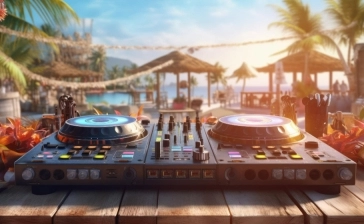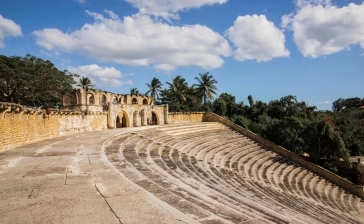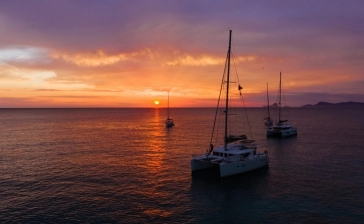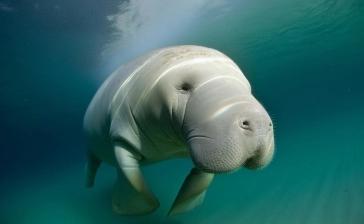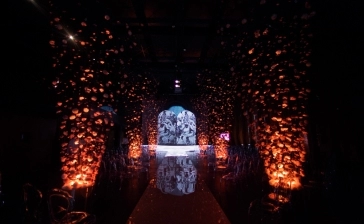Votre Punta Cana Guide
Welcome to Punta Cana, the perfect Caribbean destination in the Dominican Republic! Despite physical limitations, you can be sure that Punta Cana is a place where you'll find natural wonders, cultural heritage, and accessible amenities.
Punta Cana is located at the easternmost tip of the Dominican Republic, bordering the Caribbean Sea and the Atlantic Ocean. It is a region known for its 32 km of beaches and clear waters. The Bávaro and Punta Cana areas combine to form what is known as the Coconut Coast, an area with exclusive all-inclusive resorts.
Moreover, Punta Cana is also known for its tropical beauty and year-round warm climate. But, did you know that 50 years ago, Punta Cana was little more than a strip of white sand with palm trees? It was Ted Kheel, a labor lawyer from New York, who saw the potential of this place and began to develop it in 1970. What was once a virgin peninsula is now a thriving tropical paradise with a focus on sustainability and inclusion.
The population of Punta Cana is diverse and vibrant. Although only about 50,000 people live here permanently, this figure multiplied by ten during the high tourist season. The local population, known as "Punta Caneses," is a mix of cultures, with influences from Taino, African, European, and, more recently, immigration from other Caribbean islands.
People here are famous for their kindness and hospitality. Don't be surprised if the locals greet you with a warm "Hello!" and a broad smile. This is a culture that values community and mutual aid, something that wheelchair visitors will greatly appreciate.
When planning a trip to Punta Cana, you can expect an enriching and accessible experience. Most hotels and resorts in Punta Cana are equipped with accessible facilities, including ramps and elevators. Accessible rooms are usually equipped with walk-in showers and grab bars. In addition, many resorts offer amphibious wheelchairs that allow visitors with disabilities to enjoy the ocean.
Accessibility also extends to activities and excursions. For example, the famous Manatí Park theme park is equipped with paved paths and ramps. Tour companies also offer accessible tours that include adapted transportation.
A visit to Punta Cana is not complete without experiencing the numerous activities it offers. While traditionally many of these might seem challenging for people in wheelchairs, considerable effort has been made to make them accessible to everyone.
In addition, the Colonial Zone of Santo Domingo, about two hours' drive from Punta Cana, is a time travel to the Spanish colonial era. This UNESCO heritage has wide sidewalks and ramps, making it easy to navigate in a wheelchair.
As for gastronomy, Punta Cana is a feast of flavors and colors. Here you will find everything from local Dominican dishes to international cuisine. Many restaurants are accessible and feature Braille menus for those with visual impairments. Don't miss trying the sancocho, a traditional stew, or the Dominican flag, a dish of rice, beans, and meat.
Punta Cana is also known for its conservation efforts. The hotels of the Punta Cana Foundation, for example, implement water and energy conservation practices, recycling, and composting. The Ojos Indígenas Ecological Park is a clear example of this commitment to the environment. It is a private nature reserve with accessible trails and twelve freshwater lagoons.
Punta Cana is more than a holiday destination, it's an example of how a community can thrive without leaving anyone behind. The natural beauty of the region, the rich history and culture, and the friendliness of its people are just some of the reasons why Punta Cana is an ideal destination for people in wheelchairs
Office du tourisme
In Punta Cana, there are several tourism offices and tourist information centers that can help you plan your trip and offer useful information about the area. The two most notable are:
Dominican Republic Ministry of Tourism:
With offices all over the country, including Punta Cana, this government ministry can offer a wealth of information about local attractions, events, and accommodations. They strive to be inclusive and typically have access ramps and elevators for people using wheelchairs. For the most up-to-date information, it is recommended to contact them before your visit.
Address and Contact:
- Autovía del Este, Plaza Velero, Local 10, Bávaro, La Altagracia 23000, Dominican Republic
- Phone: +1 809-552-0142
- Website: https://www.godominicanrepublic.com/
Punta Cana Tourism Office:
This tourist information center located in the heart of Punta Cana is dedicated to providing visitors with all the necessary information about the area. They are known for their dedication to accessibility and inclusion, and their facility is equipped to accommodate wheelchair visitors.
Address and Contact:
- Plaza Coral Village No. 86, Los Corales, Bávaro, La Altagracia 23000, Dominican Republic
- Phone: (+1) 809-552-0782
Lastly, it's important to mention that many hotels and resorts in Punta Cana also have concierge services that can provide you with tourist information and help you plan your activities during your stay. These services are also usually accessible and are equipped to cater to guests with various needs.
Transport
Airport:
Punta Cana Airport has a range of facilities designed to make travel more convenient and accessible. Below, we mention some of them:
Barrier-free access: The airport has implemented ramps and suitable access points to ensure that people in wheelchairs can easily move around all areas of the airport, including terminals, waiting rooms, shops, and restaurants.
In case you need a wheelchair during your stay at the airport, they are available at the information desks. In addition, airport staff are trained to provide assistance and additional support to people with reduced mobility.
Punta Cana International Airport has two main terminals: Terminal A and Terminal B. These terminals are located in the same complex and are a short distance from each other.
Regarding assistance points, the airport offers assistance services in both Terminal A and Terminal B. These assistance points are strategically located in key areas of the airport, such as check-in rooms, security areas, and boarding gates. There, airport staff are available to provide support and assistance to people with reduced mobility.
In addition, the airport has information and customer service counters distributed in both terminals. These information points are places where passengers can obtain additional help, ask questions about accessibility, and request specialized assistance.
It is important to note that airport staff are properly trained to assist people in wheelchairs and strive to ensure that all areas of the airport are accessible to all passengers, regardless of their mobility needs.
The bathrooms at Punta Cana Airport are adapted to meet the needs of people in wheelchairs. These bathrooms have ample spaces, support bars, and other elements that facilitate access to and use of sanitary services.
The airport offers adapted transportation services for people in wheelchairs. You can request assistance to move from the airport to your vehicle, whether it is an accessible taxi or adapted transfer service.
In addition, the airport staff are trained to provide friendly customer service that is sensitive to the needs of people in wheelchairs. If you have any questions or need additional help, do not hesitate to request it from any member of the airport team.
It is important to note that it is advisable to inform the airport in advance about your accessibility needs so that they can offer you personalized attention and ensure that all necessary arrangements are in place before your arrival.
Transportation from the airport to hotels:
Unfortunately, in the specific case of Punta Cana Airport, adapted public transportation is not a common option to reach hotels. Most tourists opt for other more convenient forms of transportation, such as taxis or private transfer services.
Taxis:
Some taxi companies in Punta Cana offer vehicles adapted for people in wheelchairs. These vehicles are equipped with ramps or lifts to facilitate access. I would recommend contacting local taxi companies or your hotel for information on the availability of accessible taxis and making advance reservations if necessary.
Upon leaving the airport, you will find a designated area for taxis, but most Punta Cana taxis are not adapted. In this sense, we recommend hiring a private transportation company.
Private transfer services:
Many hotels in Punta Cana offer private transfer services from the airport. You can coordinate with your hotel in advance to arrange an adapted transfer that suits your needs. These services tend to be more comfortable and secure, as the driver will be familiar with the hotel location and prepared to assist passengers in wheelchairs.
It is important to note that each hotel may have its own policies and transportation options, so we recommend contacting the hotel you will be staying at directly for specific information on the adapted transportation options they offer.
We leave you the contact details of some companies that can help you, remember to inform them of your needs when you contact them.
Contact:
- Dominican Airport Transfer
- Phone: (+1) 407 420 7646
- Web: https://dominicanairporttransfers.com
Or
- Coco Tours
- Phone: (+1) 8299548160
- Web: https://www.cocotours.com/
Plages adaptées / accessibles
Bávaro Beach:
Bávaro Beach is one of the best beaches in the Caribbean. It is located next to many of the large hotels in the area where you can enjoy incredible water and beautiful white sand.
The Environmental Law Institute of the Dominican Republic indicates that they have an amphibious chair, lifeguard, and first aid service and also have accessible walkways for people with reduced mobility.
El Cortecito Beach:
The beautiful El Cortecito beach is well known in the Dominican Republic. Like the rest of the Caribbean coast, it stands out for its characteristic white sand and turquoise-toned water and also has an amphibious chair. Meanwhile, Cortecito Barceló Dominican Beach has access for wheelchair users.
Macao Beach:
Although it does not have specific infrastructures, Macao Beach is known for having a relatively wide entrance and compact sand, making it more accessible for people in wheelchairs. In addition, Hard Rock & Casino Punta Cana has an amphibious chair and ensures the safety of bathers.
It is important to keep in mind that although these beaches offer some accessibility, it is advisable to contact the hotels or resorts in the area to obtain more precise information about the facilities available and to ensure they meet the specific needs of each person in a wheelchair.
Restaurants adaptés / accessibles
Playa Blanca:
Playa Blanca is a beachfront restaurant and bar serving fresh seafood, authentic Dominican dishes, grilled meats, and cocktails for lunch and dinner. It is fully accessible to people with reduced mobility and also has accessible bathrooms.
Address and contact:
- Puntacana Resort & Club, Punta Cana, Dominican Republic
- Phone: (+1) 809-959-2222
- Email: playablanca@puntacana.com
Zoho Beach Club: https://www.zohobeachclub.com/
This restaurant, located on Bávaro Beach and run by a Spaniard settled there, offers traditional Spanish food with a Caribbean touch. We recommend their fresh calamari or trying a paella. It also has an extensive wine list.
Situated right in front of the beach, it has private parking and is accessible to people with mobility problems. Their bathrooms are also accessible.
Address and contact:
- Calle Marcio Maggiolo, Playa Bávaro Punta Cana 23000
- Phone: (+1) 849 885 4235 or (+1) 829 345 6674
Nakamura Restaurant: http://www.restaurantenakamura.do/#
Located at the Fishing Lodge in Cap Cana, Nakamura restaurant offers world-class Nikkei cuisine. It is accessible to people with mobility problems where you can enjoy a good dinner in a relaxed and warm atmosphere thanks to its soft and tasteful decor.
Address and contact:
- Bulevar Fishing Lodge, Punta Cana, Dominican Republic
- Phone: (+1) 849-451-5413
- Email: info@restaurantenakamura.do
